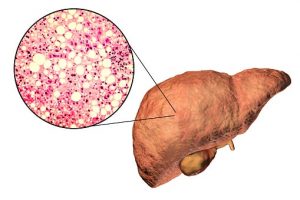
Non-alcoholic fatty liver disease (NAFLD) cases are on the rise and primarily because when people think of liver disease, they think of alcohol. But a fatty liver is equally as dangerous. NAFLD if left untreated can lead to irreversible damage leading to liver failure and a liver transplant.
People at highest risk for NAFLD are diabetics, obese individuals, and those who adhere to the typical Western diet – high in fat and sugar.
Professor Suzanne Norris explained, “It has really only come to fore in the past 10 years, and in the past two years, NAFLD is the most common disease in western countries.”
The problem is many people living with liver disease don’t know they have it. When Professor Norris ran a screening program in Ireland for liver disease, of the 48 screened, 10 had NAFLD – roughly one in five individuals.
It’s no surprise that the world is getting fat and as waistlines increase, so does the risk of NAFLD. As fat permeates the liver, it causes it to not function as it should, which contributes to illness and scarring of the liver. Over time, this scarring worsens, causing the liver to become unable to function. By the time this is detected, a patient may need a transplant.
Based on the risk factors for NAFLD, this condition is preventable, as long as a person works to reduce their risk of diabetes, eats healthy, and loses weight. But if the world continues on the path it’s on, then we will continue to see more and more cases of NAFLD and waiting lists for livers will become out of control.
There aren’t many medications approved by the FDA for liver disease, so your best bet is prevention. Also, it’s important that when you see your doctor for check-ups, you have your liver looked at through blood work to try and catch any problems early on before the situation worsens.
Also read: NAFLD diet plan: Dietary guidelines for non-alcoholic fatty liver disease